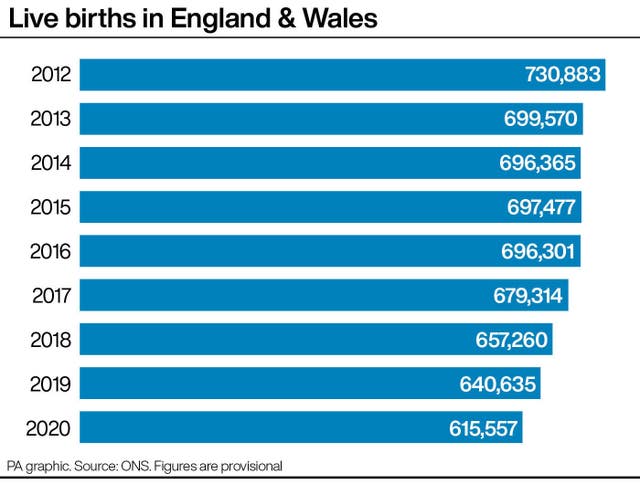No baby boom after start of coronavirus lockdown, figures suggest
The total number of live births in England and Wales in 2020 fell for the fifth successive year in a row.

The introduction of coronavirus lockdown restrictions in March 2020 did not lead to a baby boom, new figures suggest.
Fertility rates in England and Wales for December 2020 and January 2021 instead showed “relatively steep decreases” compared with the equivalent month one year earlier, down by 8.1% and 10.2% respectively, according to the Office for National Statistics (ONS).
Live births in these months would have mostly been conceived in the weeks following the start of the lockdown.
There was a year-on-year increase in the fertility rate for March 2021 of 1.7%, however, which “mostly translate to live births conceived when lockdown restrictions were beginning to be eased in summer 2020”, the ONS said.

Fertility rates are the number of live births per 1,000 women aged 15 to 44.
The rate for December 2020 was 50.1, down from 54.5 for December 2019, while the rate for January 2021 was 50.3, down from 56.0 in January 2020.
By contrast, the rate for March 2021 was 55.2: up from 54.3 in 2020.
The figures also show that the total number of live births in England and Wales in 2020 fell for the fifth successive year in a row.
Some 615,557 live births took place during the year, down 4% on 2019, and a drop of 16% from the recent peak of 730,883 births in 2012.
There were 2,429 stillbirths in England and Wales last year, the equivalent of 3.9 per 1,000 births, the ONS said.
This is down slightly from 2,596 stillbirths and a rate of 4.0 in 2019.
The stillbirth rate for January 2021 was 4.7 – the highest for any calendar month since March 2018.
January 2021 coincided with the height of the second wave of the coronavirus pandemic but the ONS said the rate was “within the plausible range that we might expect to see from random variation”, noting there are relatively low numbers of stillbirths each month, and there were 226 stillbirths in January 2021 compared with 207 in January 2020.
Meanwhile the total fertility rate in England and Wales for this year could end up being the lowest ever recorded, the ONS suggested.
Based on data for the first three months of the year, the rate for 2021 is estimated to be 1.53 children per woman.
This is down from 1.92 children per woman in 2011.
The total fertility rate is the average number of live children a group of women would bear if they experienced age-specific fertility rates throughout their childbearing life.





